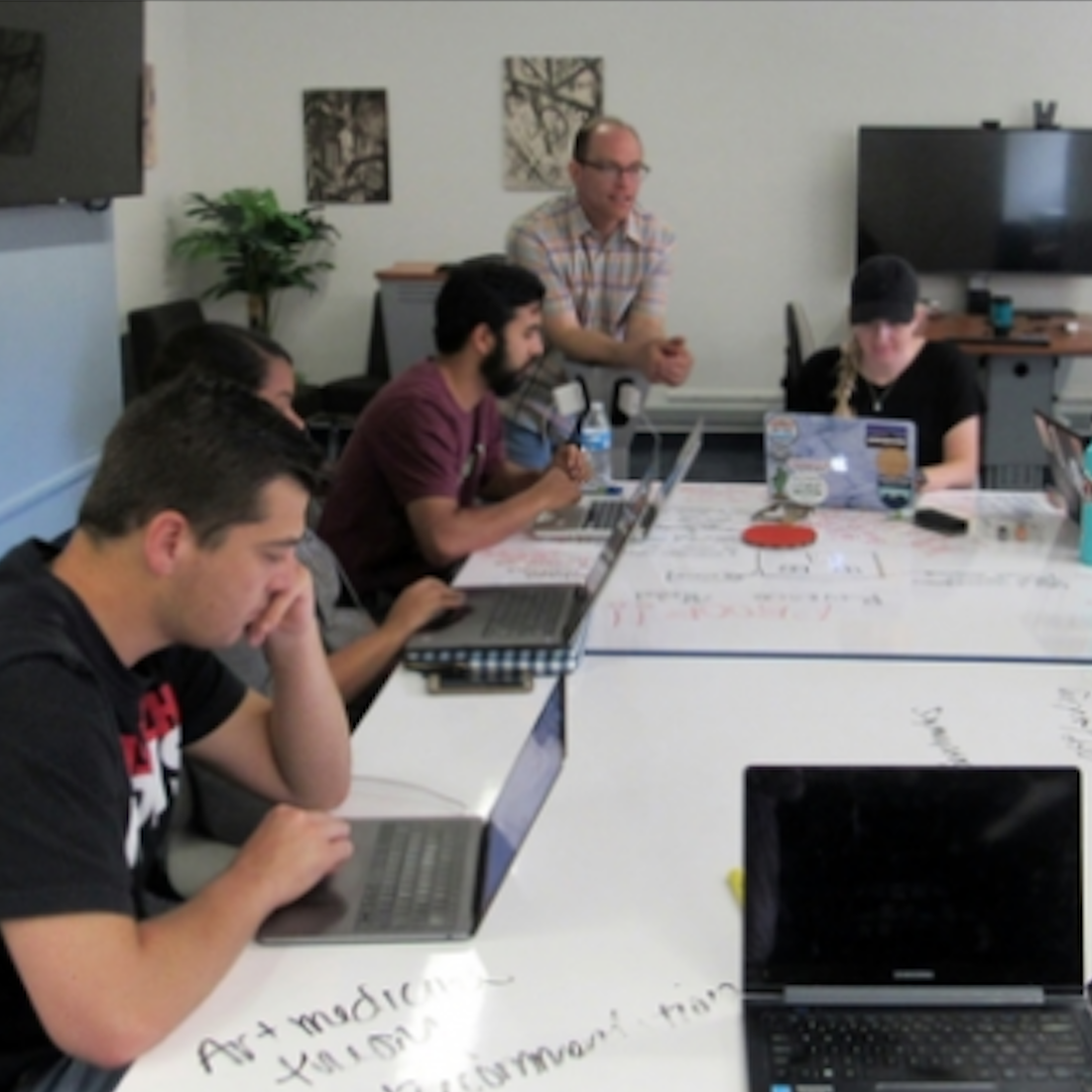UA Students Help Nonprofits Evaluate Performance
Students in the UA's Program Planning and Evaluation course worked with the Tucson-based Beads of Courage to help the nonprofit organization develop a self-evaluation.
Find the Original Article Here
In the Innovation Collaboratory – a dynamic learning space designed by University of Arizona associate professor of agricultural education Matthew Mars – a large screen displays a flowchart with outcomes of a semester project. Students sit around a dry-erase board table, reviewing columns of numbers on their laptop screens.
At first glance, the Program Planning and Evaluation course, taught by Mars, is all about number-crunching and qualitative data analysis. But behind all the data students have collected are real, powerful stories, as well as real-life practical job skills.
During the spring 2019 semester, students in the class worked with Tucson-based Beads of Courage to help the nonprofit organization develop an evaluation that will allow it to better make data-informed decisions and assess over time the performance of its programs.
Beads of Courage, founded in 2005 by Jean Gribbon, who earned her bachelor's and Ph.D. in nursing from the UA, is an art-based therapy program that provides glass beads for children who are coping with serious illness. For each step of their treatment, the children receive a unique handmade bead that helps tell their story.
More than 200 children's hospitals in the U.S., Canada, Japan, New Zealand and the United Kingdom offer Beads of Courage.
"Every year for this class I seek out a community partner to do a live evaluation," Mars said. "Beads of Courage is a local nonprofit, but it has a worldwide presence. I've known Jean for a number of years and she spoke to one of my classes. It seemed like a perfect fit."
Mars said Beads of Courage made sense for his class because the organization had never done a formal program evaluation, meaning the students in Mars' course would be creating a pilot questionnaire and interview protocol rather than building off of previous results.
"So rather than come to a conclusion, which is really hard to do if you don't have baseline data, we can make recommendations the program can use going forward in support of program expansion and innovation," Mars said.
Gribbon suggested a neonatal critical unit for pilot evaluation. Mars' class worked with parents and caregivers at the University of South Alabama Children's Hospital, distributing online questionnaires and following up with phone interviews. The group made its final presentation of the project on May 6.
In speaking to parents involved with Beads of Courage, the class heard the words "hope," "honor" and "courage" come up repeatedly.
"That was exciting because this is how we see it, but to have them describe it like that, it increases the validity of what we do," Gribbon said. "Any good nonprofit should ask, how are you advancing humanity? This process, for me, does that. It's inspiring."
Mars' agricultural education students typically go on to work as high school teachers, extension agents, or 4-H, FFA and other youth program coordinators who will be required to develop, lead, evaluate and improve their own programming.
"It's been a really unique opportunity," said Taylor Bird, who is working toward her master's degree in agricultural education. "You can see the impact (Beads of Courage) is having on children and families who are not in the best circumstances. Jean's been able to talk to us about how these children use the beads as forms of communication and (how) to be able to evaluate their program and help them move forward."


